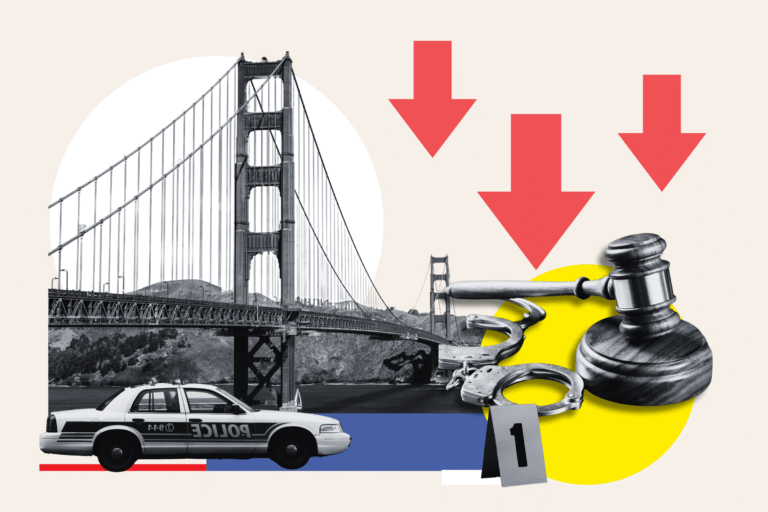San Francisco’s Declining Crime Rates: An Overview
A Shift in Perception
San Francisco has undergone substantial changes over the past two decades, emerging as a prominent center for technology and entrepreneurship. However, the city also gained notoriety for its high crime rates. Recently, there has been a marked turnaround, with crime rates witnessing a significant reduction in the last year and continuing into 2025.
Statistics Reflecting Change
The San Francisco Police Department (SFPD) has reported encouraging statistics for 2024:
- Homicides dropped by 31.4%.
- Rapes decreased by 2%.
- Robberies declined by 21.8%.
- Assaults fell by 6.3%.
- Burglary rates saw a reduction of 9.9%.
- Larceny theft decreased by 35%.
- Arson incidents dropped by 20.6%.
These trends have continued into the early months of 2025, with significant reductions noted during the first quarter:
- Homicides decreased by 55.6%.
- Rapes fell by 34.2%.
- Robberies declined by 21.2%.
- Assaults dropped by 7.3%.
- Burglary and larceny theft decreased by 42.1% and 30.4%, respectively.
- Arson incidents witnessed a decline of 29.7%.
It’s important to note that while percentage declines can appear significant over shorter time frames, they do not always represent a large numerical difference in crime counts.
Collaboration and Accountability
San Francisco’s District Attorney, Brooke Jenkins, emphasized the importance of partnerships in reducing crime. Since her appointment, Jenkins has prioritized stronger collaborations between her office and the SFPD, as well as other law enforcement agencies. “When I was appointed district attorney, we had a complete shift in the way that my office was doing the work,” Jenkins stated.
Through these partnerships, Jenkins has aimed to enhance accountability within the judicial system. She pointed out that without adequate consequences, crime could not effectively be deterred. “We can’t prosecute if the ground-level agencies aren’t doing the work,” she added.
Addressing Root Causes
Jenkins is also focusing on addressing underlying social issues, particularly concerning drug-related crimes, which she acknowledges are deeply intertwined with violence. “Many of those individuals are addicted to drugs, particularly right now, fentanyl,” she noted. The DA’s office is implementing strategies to divert drug offenders into treatment, prioritizing rehabilitation over incarceration.
Community Perspectives
Social justice organizations like GLIDE are observing these changes closely. They acknowledge the dual nature of decreasing crime rates, recognizing both opportunities for community safety and potential increases in vulnerabilities among marginalized populations. GLIDE stated, “fewer reported crimes can create a safer environment…but higher arrest rates…can also increase the vulnerability of marginalized populations.”
They highlighted the shift towards collaborative courts, which focus on treatment rather than punishment, representing a progressive approach in addressing addiction as a public health issue.
The Role of Surveillance
Increased surveillance has also become part of the city’s strategy against crime. Jenkins explained that San Francisco previously emphasized privacy over law enforcement surveillance but has recently adopted new measures following a public ballot measure. These include license plate recognition to track stolen vehicles and monitoring at high-crime locations.
However, organizations like GLIDE express caution, advocating for careful use of surveillance technology to avoid potential biases and ensure that vulnerable populations are protected.
Looking Ahead
Jenkins concluded by emphasizing the importance of fair law enforcement practices. She stated, “We want to be fair. We want to have due process… But we cannot abandon rules.” As these strategies unfold, the changing landscape of crime in San Francisco highlights the complexities and challenges ahead.



